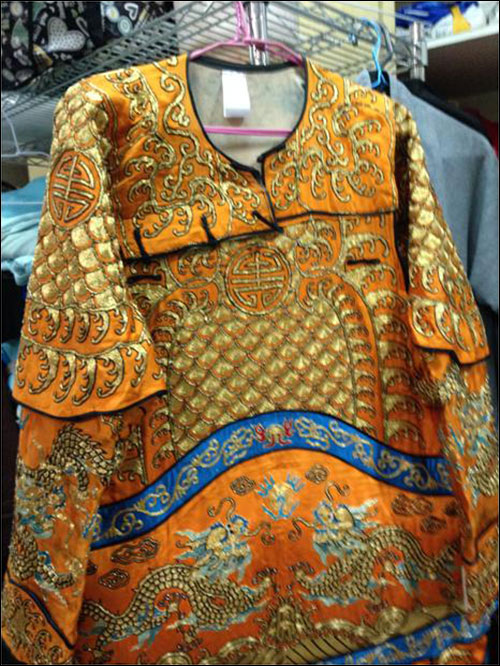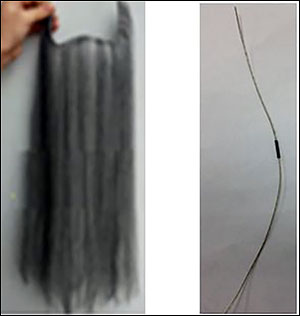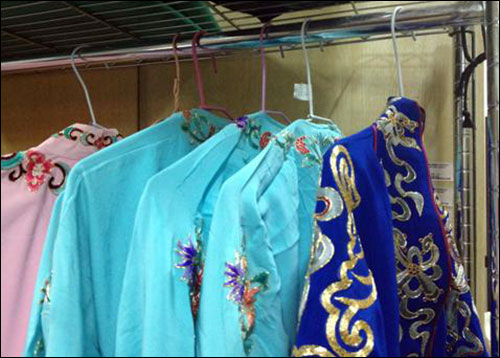Taiwanese theater company GuoGuang Opera Co. has been producing Chinese operas since it formed through the merger of three opera troupes in 1995. The works it presents are highly elaborate, with eye-catching visual effects and scenes incorporating acrobatics and kung fu. A performer may wear a costume composed of a dozen pieces, as well as carry a variety of props.
GuoGuang Opera Co. is known for incorporating modern technology, including special effects, into its traditional theatrical programs. This month, the company is turning to technology to solve the problem of locating costumes and props among the 65,000 items that it stores at a warehouse. With RFID tags and readers, GuoGuang hopes it can ensure that the pieces are easy to find when needed, and that nothing ends up missing at the worst time possible—right before a performance. The system that tracks those items, supplied by EPC Solutions Taiwan, includes ultrahigh-frequency (UHF) RFID tags, handheld and desktop RFID readers, and several “Smart Rails,” each with a reader antenna running the length of the rail, on which costumes are hung. EPC Solutions software manages all of the collected read data, enabling the opera company to locate items more quickly at its warehouse, as well as monitor how often costumes and props are used.

GuoGuang’s performers are responsible for retrieving and returning costume pieces, headgear, knives, swords and various other props, depending on the opera in production at any given time. Most productions use 300 to 500 pieces each. The management of those costumes and props had been a highly manual process, with the warehouse staff inputting each asset’s serial number and description into a Microsoft Excel spreadsheet. Until now, GuoGuang had no record of exactly where within the warehouse every item was stored. When actors searched for props or garments, many were located in wooden boxes, so they had to open each box and rummage through the items contained within, looking for what they wanted. Inventory was often moved within the storage area, and while some workers knew where a specific item had been relocated, others did not. This meant that considerable time was spent searching for items and asking other employees before a particular piece needed could be found.
In addition, the costumes are very expensive. Few tailors can duplicate the garments’ ancient style. The loss of even a single piece of clothing would thus be costly for the opera company.
GuoGuang Opera’s director, H.M. Zen, says the company does not expect to achieve a financial return from using the technology. Rather, it hopes to gain confidence that all of its costumes and props will be available when needed. “The main purpose of this system is to give us correct inventory, instead of saving money,” Zen explains. “We also want to help actors find their props quickly. With this system, the actor doesn’t need to memorize what props he may need for certain repertoire.”
With the RFID system, the process of locating the necessary items becomes much easier than with the manual method, according to T.H. Liu, EPC Solutions Taiwan’s president. Each costume or other item is fitted with an RFID tag, manufactured by EPC Solutions Taiwan. An L30 laundry tag is sewn into each garment’s collar or other section with a seam, while an EPC B-112 button tag is attached to each piece of headgear, and an EPC M-203 on-metal tag is used for tracking swords and knives. The beards worn by some performers posed a particular challenge, since faux facial hair offers no space for a conventional tag to be attached. Therefore, EPC Solutions Taiwan developed a special tag that could be embedded in such a way that it would not interfere with a performer’s ability to stroke his beard while on stage. The result is the M-731 tag, consisting of a thin wire antenna bonded to an Alien Technology Higgs4 RFID chip.

Once each item is tagged and entered into the EPC Solutions software, residing on GuoGuang’s server, it is assigned a location within the warehouse. At that location, a UHF RFID tag is affixed to shelving. As staff members put the goods away, they use an Atid AT880UHF handheld reader to capture the ID number encoded to the shelf tag, as well as the ID encoded to the tag of a garment or prop, in order to link the item to its location.
Warehouse staff can then conduct periodic inventory checks in the warehouse using the same handheld reader.
For performers of the company’s latest opera—The Clever Mayor, opening on Dec. 6—the borrowing system is also RFID-enabled. Each actor has an ID card containing a passive high-frequency (HF) 13.56 MHz RFID inlay. When she holds her card against an HF reader installed at the warehouse doorway to gain entrance, the system reads her tag ID and displays a list of operas in production on a touchscreen mounted with the reader. She must then select the opera for which she is borrowing stored items. Once she has made that selection, the system displays a checklist of props or costumes that she will require, which includes not only the items’ names, but also their locations within the warehouse where they were put away.
If the actor wishes, she can print the list to carry with her inside the warehouse. She then takes a large basket and collects the props and costume components she needs, placing the smaller items in the basket. If an item is not where it should be located, she can use a handheld to pinpoint that lost article. Once she is finished collecting all items, she brings the basket and any other costume pieces or props to a table near the exit. Incorporated into the table are an Alien Technology ALR-9650 desktop reader and an antenna measuring 90 centimeters (35 inches) in length by 50 centimeters (19.7 inches) in width. She places the filled basket, as well as any larger items she is carrying, on the tabletop antenna, and the ALR-9650 captures all of the tags’ unique ID numbers.
In some cases, an actor may be wearing a costume (if he opted to try one on for size and then kept it on as he left the warehouse, for instance). In that scenario, a warehouse worker would use a wand antenna connected to the table’s reader to capture all tag IDs, by waving it over the costumed performer. The ALR-9650 reader typically comes with two antenna ports, Liu says—one for its built-in internal antenna, and one for an external antenna. “We have modified the ALR-9650 to create two external ports,” Liu explains. “That means we took out the embedded antenna and replaced it with the slim table antenna.”

Once the performance is finished for the night, the actors return their items by presenting their ID cards to the HF reader at the entrance, indicating what they are returning and then leaving the garments at the warehouse to be stored. Warehouse personnel receive the costumes and props, read the tags and proceed to clean the items, if necessary, or simply put them away until they are needed for the next performance. The warehouse workers then log into the EPC Solutions software to update each item’s status as being returned or cleaned, as well as on which shelf it was returned.
In some cases, costumes frequently used and of high value are hanging on rails, and their presence there needs to be verified daily. In this case, another ALR-9650 reader is installed and connected to EPC Solutions Taiwan’s Flexant 1-meter-long (3.3-foot-long) cable antenna. Each rail has a flexible antenna running along its length, enabling the reader to capture the tag ID numbers of the 15 or so garments hanging on that rail. That data is forwarded to the EPC Solutions software on a daily basis, and if a garment that should be on the rail is discovered to be missing, the software can issue an alert to the production managers.
Initially, GuoGuang Opera Co. has tagged approximately 1,000 items that will be used during performances of The Clever Mayor. However, Zen says, costumes and props will be tagged for other operas as they open. According to Zen, the opera company expects to have all 65,000 of its items tagged within the next three years.

